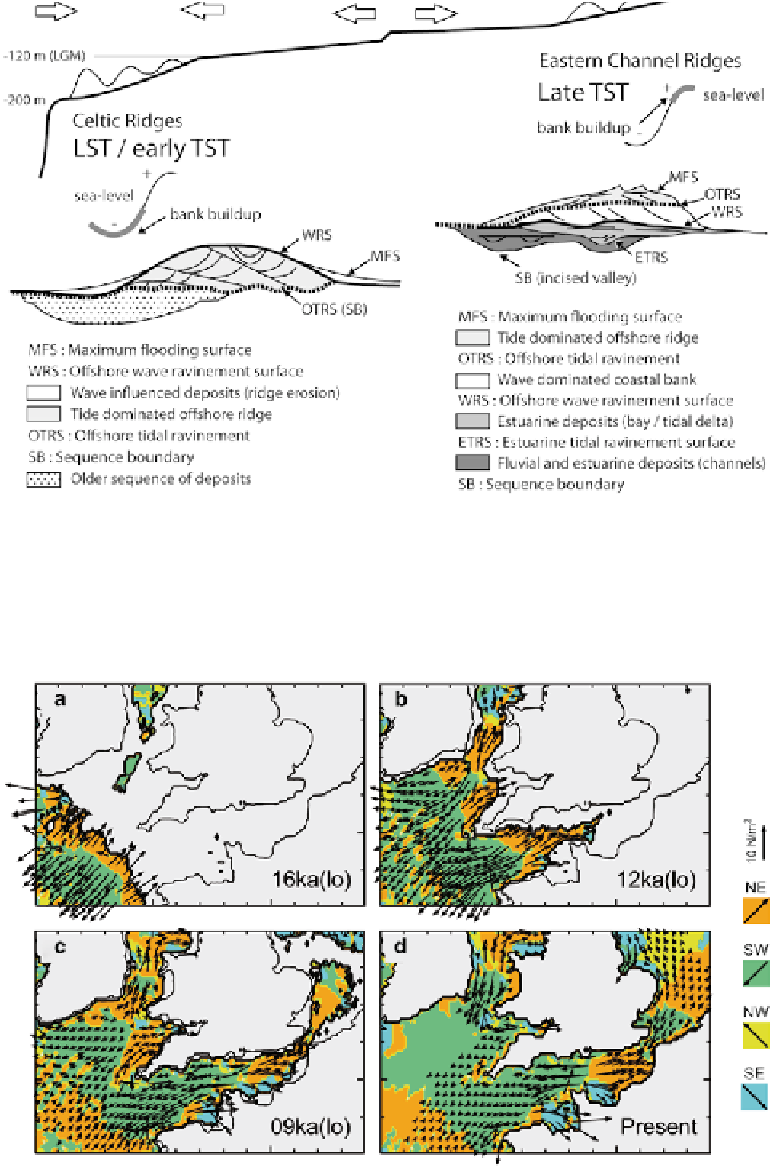Geology Reference
In-Depth Information
Fig. 13.25
Depositional setting and key sequence-stratigraphic
surfaces within tidal sand ridges in the southern Celtic Sea and
eastern English Channel (see location in Fig.
13.6a
, ridge fields
6 and 4, respectively) that were formed early and late, respec-
tively, in the last post-glacial transgression. The shallower tidal
ridges have a core that may preserve coastal sandbodies. By
contrast, the offshore tidal ravinement surface has more time
to rework the deeper ridges, which are therefore 'fully evolved'
(cf. Fig.
13.24
). Subsequent to their formation, tidal currents
became weaker in the course of the transgression, leaving them
“moribund” and partly eroded by storm waves, forming a wave
ravinement surface at their crest (After Reynaud et al.
2003
)
Fig. 13.26
Paleotidal modeling of the English Channel, Irish
Sea and southern North Sea for four times during the last trans-
gression. The maps show the peak bed-stress vectors (length is
proportional to the current strength) and the directions of poten-
tial sand transport, which define the tidal-transport pathways
that evolve through time as sea level rises. The peak bed stress
near the shelf-margin, in the area occupied by the Celtic Sea
sand ridges (Figs.
13.6
a and
13.12
), is at a maximum around
16 ka, suggesting that these ridges were formed in the early
stage of the last transgression. Note that, as transgression pro-
ceeds eastward up the English Channel, the shear stress decreases
until the Strait of Dover is flooded, at which time conditions are
created that allow the formation of a new set of ridges there (cf.
Fig.
13.25
) (From Uehara et al.
2006
)

